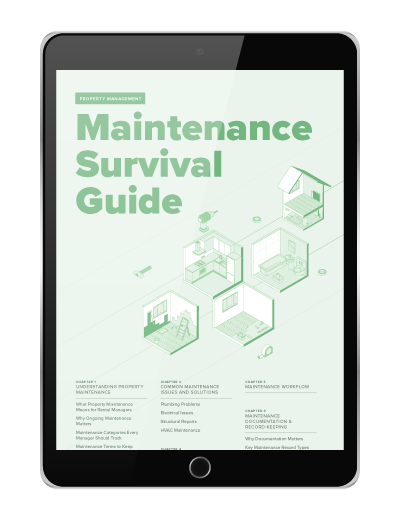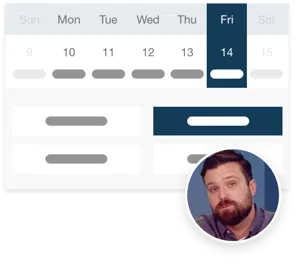As a property manager, you already know that keeping things running efficiently is no small task. Managing tenants, overseeing budgets, coordinating repairs, and maintaining the property can quickly become overwhelming without the right tools. This is where property maintenance management systems come into play. These systems are designed to help you handle maintenance tasks, track issues, and communicate with vendors, making it easier to keep your properties in good condition while saving time and reducing stress.
In this blog post, we’ll explore how these systems can benefit property managers and why adopting one could make your job simpler and more effective.
What Is a Property Maintenance Management System?
A property maintenance management system is software that helps property managers handle all aspects of maintenance for their properties. It allows you to track and schedule repairs, communicate with tenants and vendors, keep a record of maintenance requests, and monitor the overall condition of your buildings. These systems often include features such as work order tracking, inventory management, and automated reminders. Whether you manage a single building or a large portfolio of properties, this kind of system can help you stay on top of maintenance and ensure everything is addressed in a timely manner.
The Benefits of Using a Maintenance Management System
There are many reasons why property managers might consider adopting a maintenance management system. Here are just a few:
1. Centralized Record-Keeping
One of the most significant advantages of using a property maintenance management system is the ability to centralize all maintenance records. Instead of juggling spreadsheets, email threads, and paper files, you can keep everything organized in one place. This includes tenant repair requests, work orders, vendor invoices, and maintenance schedules. With everything stored digitally, you can easily access historical records, track recurring issues, and identify patterns or trends that may need to be addressed.
For example, if a tenant reports frequent plumbing issues, a maintenance system can help you track how often these repairs are needed and whether certain units are more prone to problems. This kind of information can help you make more informed decisions about preventive maintenance or whether it’s time to replace certain equipment.
2. Automated Work Orders and Task Management
A maintenance system can easily generate work orders when tenants submit maintenance requests, reducing the need for you to manually create or assign tasks. These systems can be set up to assign work orders to specific vendors or maintenance staff based on availability or skill set. Once a task is completed, the system can automatically update the status, making it easier to track progress.
Automating the task management process can save you time and reduce human error. Rather than relying on emails or phone calls to communicate with vendors, everything can be handled within the system, keeping all parties in the loop. Additionally, many systems allow you to set deadlines for tasks, ensuring that repairs are completed on time.
3. Improved Communication with Tenants
A maintenance management system offers a convenient way for tenants to submit repair requests and track the status of their requests. Tenants can use a portal or app to submit issues, and you can provide updates or let them know when repairs are scheduled. This kind of transparency can lead to better tenant satisfaction, as they will know that their concerns are being addressed.
Moreover, the system can also be used to send out reminders or notifications, such as when an inspection is due or when a maintenance technician will be on-site. This helps keep tenants informed and minimizes the chance of miscommunication or missed appointments.
4. Better Vendor Management
Property managers often rely on a network of vendors to handle repairs and maintenance tasks, from electricians to plumbers to cleaning services. A maintenance management system can help you keep track of all your vendors, including their contact details, work history, and performance. Some systems even allow you to rate or review vendors based on their work, helping you to identify your most reliable partners.
By tracking vendor performance and keeping a record of past work, you can make more informed decisions about who to call for future projects. Additionally, some systems allow you to set up preferred vendors for specific types of work, streamlining the process of assigning tasks.
Read More: The Ultimate Property Management Vendor Guide
5. Reduced Emergency Repairs
One of the most costly and stressful aspects of property management is dealing with emergency repairs. Unplanned issues, such as a broken HVAC system or a leaky roof, often result in expensive repairs and upset tenants. However, with regular maintenance and monitoring, many of these issues can be avoided.
Property maintenance management systems can help by scheduling routine inspections, preventive maintenance, and timely repairs. By keeping an eye on your properties’ overall condition and addressing small problems before they turn into bigger ones, you can prevent many emergency situations. For example, if a system or appliance is nearing the end of its expected lifespan, you can plan to replace it before it fails completely.
Read More: Understanding and Managing Rental Property Maintenance Emergencies
6. Cost Control and Budget Management
A maintenance management system can help you keep better track of maintenance-related expenses. By monitoring the cost of repairs, replacements, and routine services, you can build a more accurate maintenance budget. You can also track vendor invoices, compare costs, and spot areas where you might be able to reduce spending.
Some systems even allow you to set up budgets for each property or each type of service, making it easier to stay within your financial goals. By tracking all of this data, you can avoid unexpected costs and make more informed decisions about where to allocate resources.
7. Simplified Compliance and Reporting
If you manage properties that are subject to local regulations or industry standards, a maintenance management system can help you stay compliant. The system can keep track of inspections, safety checks, and maintenance schedules, making it easier to demonstrate compliance during audits or inspections.
Additionally, most systems come with reporting tools that allow you to generate reports on maintenance activity, costs, and vendor performance. These reports can be shared with stakeholders or used for internal analysis, making it easier to keep everyone in the loop.
Key Features to Look for in a Property Maintenance Management System
If you’re considering implementing a property maintenance management system, there are a few key features to look out for to ensure the software will meet your needs:
- Work Order Management: Look for a system that allows you to create, assign, and track work orders. This feature should allow you to track the status of repairs and communicate directly with vendors and tenants.
- Mobile Access: A mobile-friendly system is important, as it allows you and your team to manage maintenance tasks on the go. This is particularly useful for on-site inspections or when you need to approve work orders in real-time.
- Inventory Management: The system should help you keep track of inventory, such as spare parts, tools, or supplies. This will help prevent delays caused by missing or insufficient resources.
- Vendor Management: Look for features that allow you to track vendor details, ratings, and work history. A built-in vendor portal can also help you manage bids and contracts.
- Tenant Portal: Make sure the system offers a user-friendly tenant portal where tenants can submit maintenance requests, track progress, and communicate with property managers.
- Reporting and Analytics: A robust reporting feature can help you track maintenance costs, analyze trends, and make data-driven decisions about your properties’ maintenance needs.
Finding the Right Property Maintenance Management Systems for Your Business
Property maintenance is an ongoing responsibility for property managers, but using a property maintenance management system can make the process more manageable and efficient. By centralizing your maintenance records, automating tasks, improving communication with tenants and vendors, and gaining better insight into your costs and budgets, you can handle your properties more effectively.
Whether you’re managing one building or a portfolio, these systems can save you time, reduce stress, and help you provide a better experience for both tenants and property owners. As technology continues to evolve, adopting a property maintenance management system might be the key to staying ahead in an increasingly competitive market.
Read more on Maintenance

